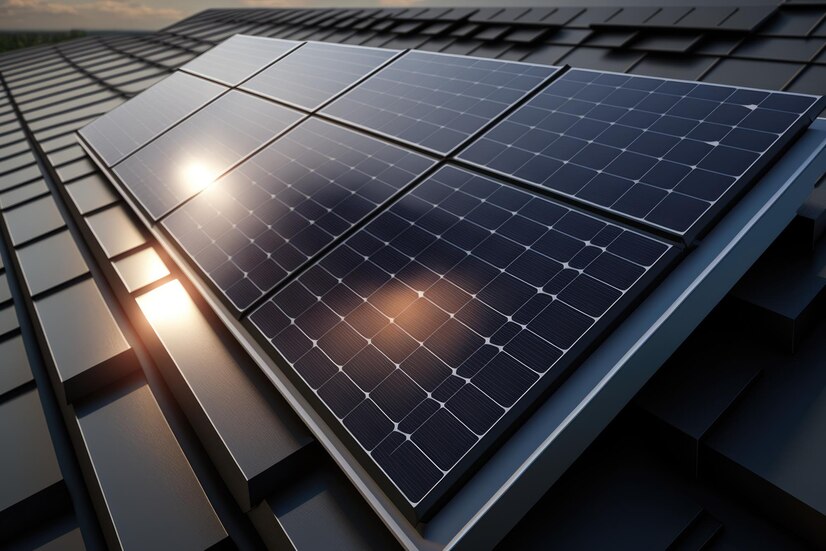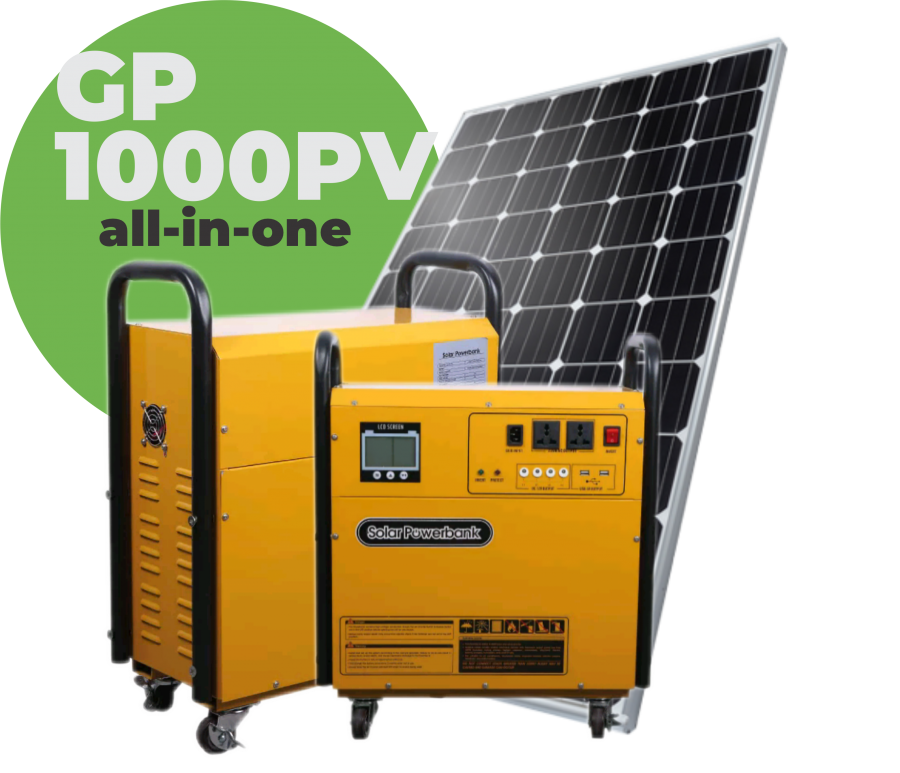A Comprehensive Guide to Solar PV Solutions- Benefits, Instalations, Maitenance.
Best Renewable Energy Company in Nigeria > Article > A Comprehensive Guide to Solar PV Solutions- Benefits, Instalations, Maitenance.
A Comprehensive Guide to Solar PV Solutions- Benefits, Instalations, Maitenance.
Harnessing the power of the sun’s enrgy is more crucial than ever as the world continues to embrace renewable energy. Solar photovoltaic (PV) solutions have emerged as a promising source of clean and sustainable power, making them an ideal option for individuals and businesses. The need to understand the different types of solar PV solutions, their installation process, maintenance requirements, and cost considerations becomes vital. This blog post aims to provide a comprehensive overview of solar PV solutions, allowing readers to make informed decisions while highlighting the environmental and economic benefits of Solar Energy.

What is a Solar PV Solution
A Solar PV (Photovoltaic) solution is a sustainable and eco-friendly approach to generating electricity by harnessing energy from sunlight. The system operates by utilizing solar cells, which are made of semiconductor materials like silicon, to convert solar energy into electrical energy. The scientific process behind this technology is called the photovoltaic effect, where sunlight is absorbed by the solar cells and electrons are knocked loose from atoms within the cells, which in turn generates an electric current. This solution is widely popular and increasingly being adopted as a reliable source of renewable energy for both residential and commercial use.
Types of Solar PV Solutions
There are three types of Solar PV Solutions available in the market
1. Monocrystalline Solar Panels: These panels consist of single-crystal cells, which provide the highest efficiency levels and are perfect for installations in limited space. Their sleek design enhances aesthetics, but they tend to be more expensive.
2. Polycrystalline Solar Panels: These panels are made from multi-crystal cells, which makes them cost-effective and widely available. Although they offer slightly lower efficiency levels, their overall performance remains satisfactory.
3. Thin-Film Solar Panels: These panels possess a flexible design, allowing for unconventional installation options. While thin-film panels are less efficient, their lower cost and adaptability make them popular for large-scale projects.
The SHS Generator GP1000PV is an all-in-one solar power system that generates and stores energy for off-grid applications. It includes three 180-watt solar panels, a 2.4kWHr sealed lead-acid battery, a 1000W inverter, and eight energy-efficient LED light bulbs.
In addition to the above components, the SHS Generator GP1000PV (All-in-One) is also capable of powering a range of other devices, including:
*Fans *Phones *Laptop *TV+Decoder *Fridge/Freezer *Clipper *Printer
PayGo option is available for installments packages, ranging from 3-24months payment plan
Benefits and Drawbacks
It’s a clean and renewable energy solution that offers significant benefits in terms of cost savings, energy independence, and environmental impact. However, like any other technology, solar panels have their drawbacks that need to be considered before making an investment decision. Below are few benefits and drawbacks.
Benefits
Clean and Renewable: Solar PV solutions utilize the sun’s energy, leaving behind no harmful emissions or byproducts. They do not contribute to air pollution or global warming, making them an eco-friendly solution.
Cost Savings: Solar energy helps reduce or eliminate electricity bills, providing long-term financial savings. It also minimizes the reliance on external energy sources, which can be subject to price fluctuations.
Energy Independence: By generating their power, individuals and businesses become less reliant on external energy sources. This leads to energy independence, making them less vulnerable to power outages or energy supply disruptions.
Drawbacks
Initial Investment: The upfront costs associated with solar PV solutions can be significant, though various financial incentives are available to mitigate this. However, the long-term economic benefits outweigh the initial investment, making them an excellent investment for the future.
Weather Dependence: Solar panels’ efficiency relies on sunlight exposure, making them less effective in regions with limited sunlight or during cloudy days. However, advancements in technology have made solar panels more efficient in low-light conditions.
Space Requirements: Solar panel installations typically require significant roof or land space, which may not be viable for all properties. However, solar panels’ flexibility and adaptability make them suitable for a variety of installations, including rooftops, carports, and ground-mounted systems.

Installation Process
Installing solar PV solutions requires professional expertise. Typically, the process involves:
Site Assessment: Professionals evaluate the property’s solar potential, shading issues, and structural integrity. This helps in determining the solar panel’s size, shape, and orientation.
Design and Permits: Engineers create a customized design, taking into account local regulations, permits, and equipment requirements. This includes the type of solar panels, inverter, and mounting system.
Installation: Solar panels and their associated components, such as inverters and wiring, are installed by trained technicians. The installation process takes place quickly, and the system can be up and running in a matter of days.
Connection to the Grid: Working in collaboration with utility companies, the system is interconnected to the existing power grid. This allows the excess energy generated by the solar panels to be fed back into the grid, offsetting electricity bills further.

Maintenance Requirements
Solar PV solutions are renowned for their low maintenance requirements, but vigilance is necessary to ensure optimum performance and longevity:
Periodic Inspection: Routine inspections ensure that panels, wiring, and inverters are functioning correctly and are free from damage, debris, or shading. This helps in identifying any issues that may affect the system’s efficiency.
Cleaning: Regular cleaning of solar panels helps optimize energy production by removing dust, dirt, and bird droppings. This helps in maximizing the system’s output and prolonging its lifespan.
Monitoring Controls: Utilizing built-in monitoring systems allows homeowners and businesses to track energy production, detect any abnormalities, and ensure system efficiency. This helps in identifying any issues that may affect the system’s performance and addressing them promptly.
The SHS Generator GP1000PV is an all-in-one solar power system that generates and stores energy for off-grid applications. It includes three 180-watt solar panels, a 2.4kWHr sealed lead-acid battery, a 1000W inverter, and eight energy-efficient LED light bulbs.
In addition to the above components, the SHS Generator GP1000PV (All-in-One) is also capable of powering a range of other devices, including:
*Fans *Phones *Laptop *TV+Decoder *Fridge/Freezer *Clipper *Printer
PayGo option is available for installments packages, ranging from 3-24months payment plan
Considerations
Initial Investment: The cost of solar panel installations varies based on several factors, including system size, equipment quality, and installation complexity. However, federal and state incentives, tax credits, grants, and leasing options can substantially reduce upfront expenses. This makes solar PV solutions an affordable option for many homeowners and businesses.
Return on Investment: While solar PV solutions may have higher upfront costs, long-term savings on electricity bills, potential income from excess power generation, and increased property value can result in a significant return on investment over time. This makes solar PV solutions an excellent investment for the future.
Net Metering: Many regions allow individuals to sell excess electricity generated by their solar panels back to the grid, offsetting their energy costs further. Researching local net metering programs and associated policies is essential for maximizing the economic benefits.
In conclusion, solar PV solutions provide an eco-friendly, cost-effective, and energy-independent solution for individuals and businesses. The available types of solar panels – monocrystalline, polycrystalline, and thin-film – offer a range of options to suit varying requirements. While solar panels’ initial investment may be significant, the long-term benefits outweigh the costs. The installation process, requiring professional expertise, involves site assessment, design and permits, installation, and connection to the grid. Maintenance requirements, including periodic inspection, cleaning, and monitoring controls, ensure optimal performance and longevity. With federal and state incentives and net metering options, solar PV solutions provide an affordable and excellent investment for the future.


